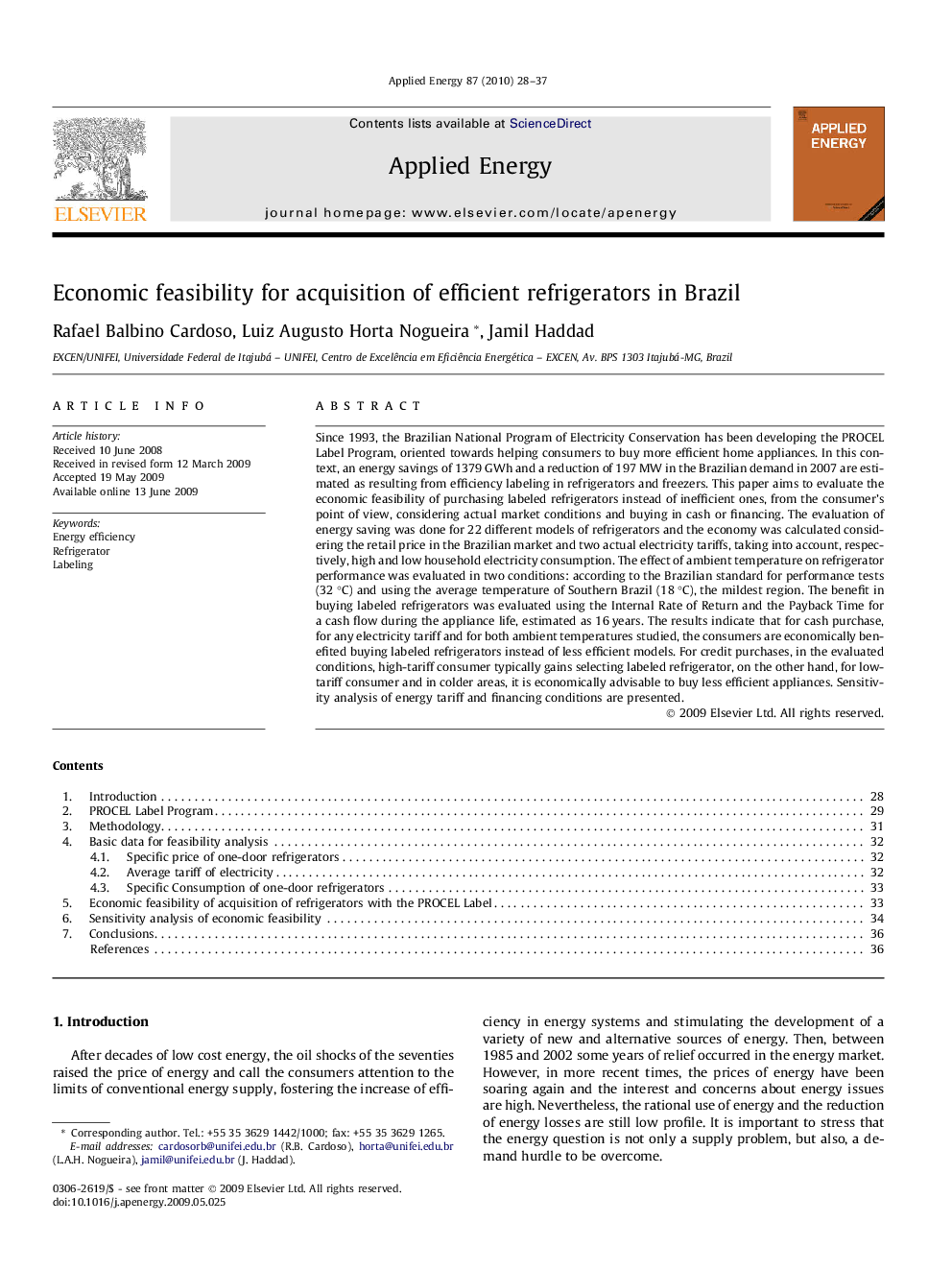| Article ID | Journal | Published Year | Pages | File Type |
|---|---|---|---|---|
| 244866 | Applied Energy | 2010 | 10 Pages |
Since 1993, the Brazilian National Program of Electricity Conservation has been developing the PROCEL Label Program, oriented towards helping consumers to buy more efficient home appliances. In this context, an energy savings of 1379 GWh and a reduction of 197 MW in the Brazilian demand in 2007 are estimated as resulting from efficiency labeling in refrigerators and freezers. This paper aims to evaluate the economic feasibility of purchasing labeled refrigerators instead of inefficient ones, from the consumer’s point of view, considering actual market conditions and buying in cash or financing. The evaluation of energy saving was done for 22 different models of refrigerators and the economy was calculated considering the retail price in the Brazilian market and two actual electricity tariffs, taking into account, respectively, high and low household electricity consumption. The effect of ambient temperature on refrigerator performance was evaluated in two conditions: according to the Brazilian standard for performance tests (32 °C) and using the average temperature of Southern Brazil (18 °C), the mildest region. The benefit in buying labeled refrigerators was evaluated using the Internal Rate of Return and the Payback Time for a cash flow during the appliance life, estimated as 16 years. The results indicate that for cash purchase, for any electricity tariff and for both ambient temperatures studied, the consumers are economically benefited buying labeled refrigerators instead of less efficient models. For credit purchases, in the evaluated conditions, high-tariff consumer typically gains selecting labeled refrigerator, on the other hand, for low-tariff consumer and in colder areas, it is economically advisable to buy less efficient appliances. Sensitivity analysis of energy tariff and financing conditions are presented.
